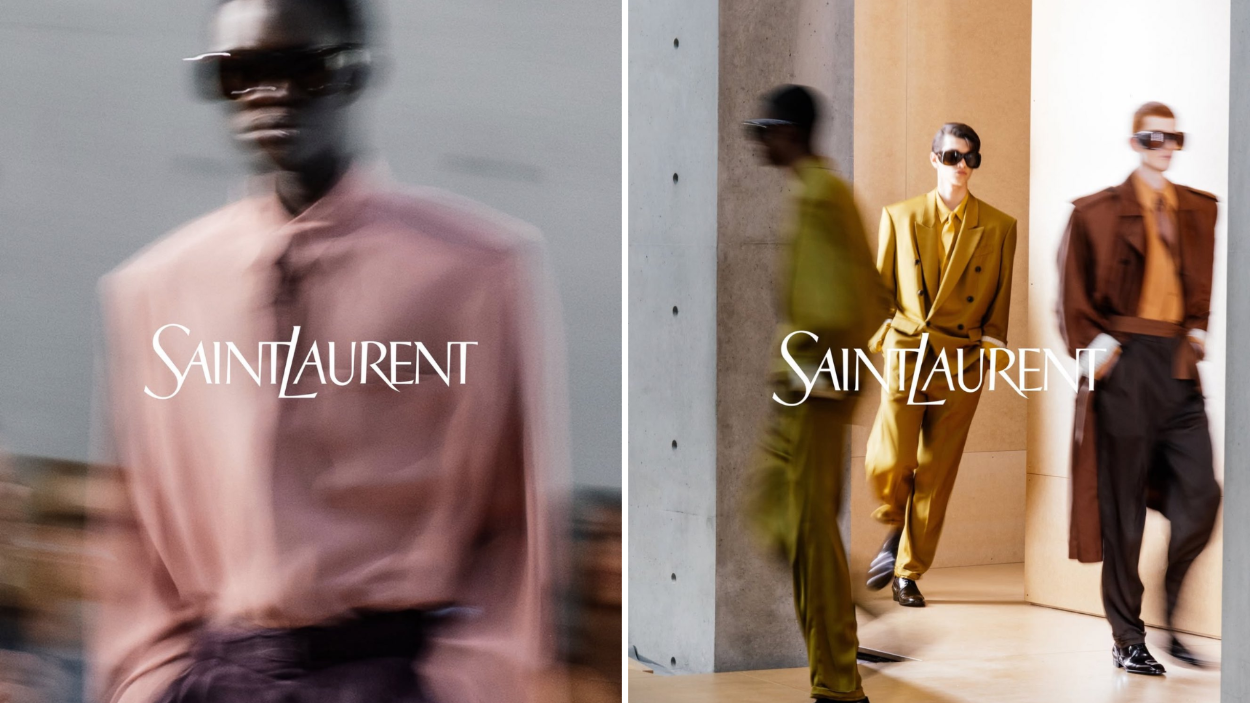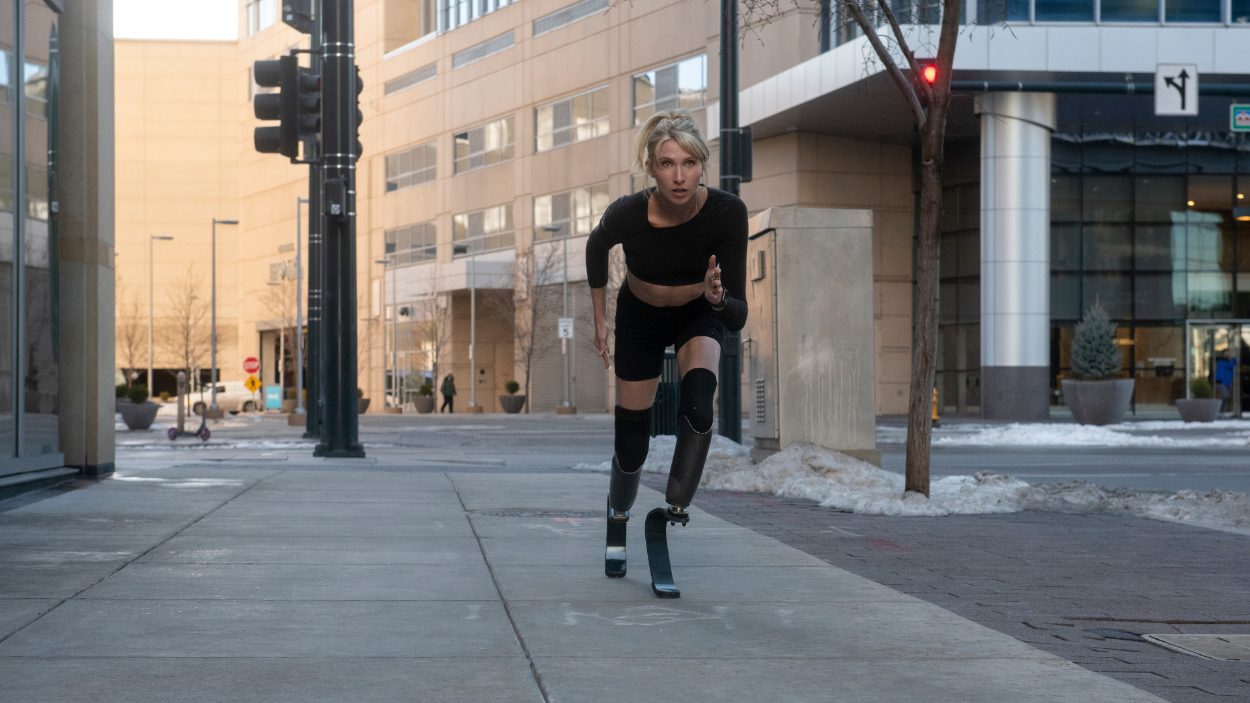Key Takeaways:
- The widespread proliferation and sheer volume of “too perfect” AI generated imagery across social media platforms is leading to significant content over-saturation and audience fatigue. This trend is so pronounced that YouTube is implementing measures to de-monetise “mass produced and repetitive content”.
- In a direct counter movement to this synthetic aesthetic, some fashion brands are actively embracing “imperfection” to signal authenticity. Recent campaigns from Saint Laurent and Brunello Cucinelli feature deliberately blurred, grained and underlit photography, emphasising human touch over AI-driven flawlessness.
- This shift indicates a growing industry sentiment: while AI tools remain valuable for efficiency and cost-effectiveness, content that visibly embodies time, craft, and a discernible human touch is becoming increasingly more valuable and credible.
You’ve probably already seen them, those faces that seem just a little too perfect. The giveaway used to be hands, sometimes too many fingers, sometimes too few, sometimes something that looked like something doing an impression of a hand. But that was a 2024 issue, in 2025, the tell is people who look “too” good, too aesthetically pleasing, too perfect.
Scroll long enough on any major social media platform and you’ll soon come face to face with what we’re talking about. People. Walking, talking, content creating “people” but here’s the thing, they aren’t people at all. They’re AI generated facsimiles of people. They’re everywhere, and they’re growing in number fast.

That’s likely why Youtube has stepped in. Last week they announced plans to crack down on what they call “mass produced and repetitive content”, a thinly veiled swipe at AI-generated video clogging the platform. Meanwhile, a UN-affiliated research institute (specifically the United Nations University Centre For Policy Research) released an experimental project featuring AI generated avatars of a Sudanese refugee and a soldier. The researchers called it “playing around with the concept” meant to provoke classroom debate (Well, here we are!), but the response was swift. Why simulate the story of a refugee when actual refugees are capable of telling it themselves?
What’s troubling here isn’t the illusion. It’s the speed and willingness to embrace it, to build campaigns around avatars not people.
Fashion, for its part, has started to flinch. Not everywhere (H&M and Mango have both very publicly flirted with the use of AI models as we covered in the past) but in some places, the sheen of AI is producing creative rebellion. Saint Laurent’s Summer campaign is the perfect example of this. Its product photographs are soft, blurred images, with blown out light, little to no retouching, and certainly no high-gloss, perfection that comes with an AI sheen. It all feels very deliberate. A signal that when everything begins to look like it came from the same generative tool, the only thing that feels honest is the exact opposite. AI influencers and models were supposed to be efficient but as they become more and more real, as generative tech becomes better and better at “faking it”, they’ve made “real” the most valuable look in fashion.

That isn’t to say what we’re seeing is a full blown rejection of AI. Far from it. A single campaign from a storied fashion house does not a trend make. Brands aren’t pulling away from generative tools altogether. But it does suggest that some are reacting to the growing influence of AI generated imagery, and the rising tide of hostility towards it. Saint Laurent’s campaign doesn’t just stand out because it looks different (and it does so looking undeniably great). It stands out because it feels witnessed. Like someone was behind the camera. Like a light hit a lens instead of a render engine. Like the motion and blur no matter how orchestrated, is there because it captured real people in real motion.
That presence is becoming harder to fake and harder to find, and that’s likely why it’s starting to matter again. Now, that likely won’t mean a wholesale rejection of AI from a creative but also practical standpoint. The Interline doesn’t see a version of that future happening anywhere (not least because AI can copy a “look” even an imperfect one rather easily). Generative tools will remain in the mix as long as they remain useful, convenient, and most importantly of all cost efficient. But it does show a sense of changing sentiment, that the more content you can produce instantly, the more valuable anything that takes time becomes.

It’s felt more clearly in campaigns like Saint Laurent’s or Brunello Cucinelli’s High Summer 2025 campaign, where the images are grainy, blurred and purposely less polished (though to be frank, they’re still sumptuously shot). They’re images that feel lifted from the middle of a moment, not staged at the end of one. And it makes total sense from a creative standpoint. The more polished everything becomes, the more brands seem to be looking for ways to roughen up the edges.
It’s showing up in castings too. People who look like people. Models that are perfectly imperfect. And it’s happened before, the first time round as a reaction to filters when they first broke onto the digital scene, now it’s a step further, so it only makes that the solution to “perfect” looking fake models, is real models whose imperfections are now celebrated where once they were barriers. There’s an intimacy there you simply don’t achieve with AI models, an intimacy that simply feels better.
Call it fatigue or stronger still, call it resistance, whatever the label, the overproduced is beginning to feel underwhelming.

Think back to those Ghibli-style images that flooded the internet when OpenAI released GPT Image 1. For a moment, they were everywhere, images that tapped into something that felt warm and familiar, but the feeling didn’t last long. The novelty thinned and the charm dulled. A week later, they felt passè.
Same for those AI-generated action figures that turned real people into collectable toys. Viral on Monday. Forgettable by Friday. Not because they failed, but because they succeeded too fast and too often. That’s what happens when you can replicate a trend on demand. There’s no natural arc, just saturation, repetition, and eventual collapse.
Fashion and beauty content faces the same risk. Scroll through enough campaign shots that are too technically perfect and they start to slide off the brain. They don’t read as crafted. They read as constructed, and worse still they look like ads. The kind that digitally literate viewers scrolls past before they even register what’s being sold.

That’s why these little imperfections matter so much now. They act as evidence that someone was in the room. That a person flinched, moved when they shouldn’t have or simply breathed and the camera caught it.
Even outside the industry, that hunger for emotional reality is showing up. A recent report highlighted how children are turning to AI chatbots not because they confuse them for people, but because they’re present. Always available to talk and never too tired. There’s something a little bleak in that, but also something revealing: we’re not mistaking machines for humans, we’re looking for human cues in a world that increasingly edits them out.
If audiences are getting better at spotting what feels manufactured (even when it’s not), then the opportunity is obvious. Show your working. Let the process bleed through. Let the image carry some trace of how it was made. Because it’s in that space that credibility is earned, not as a marketing message (though it carries that too) but as a feeling, or as is so popular to describe it in this day and age “a vibe”, one that happens when a viewer doesn’t just see the picture, they sense the person who took it.
